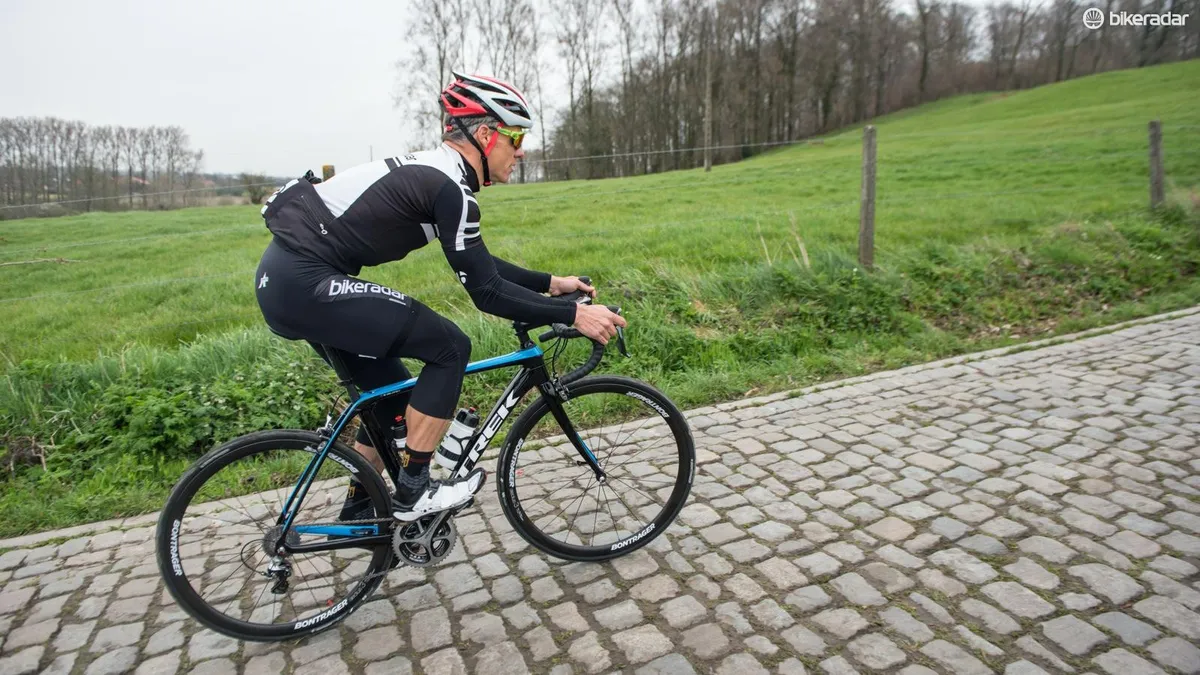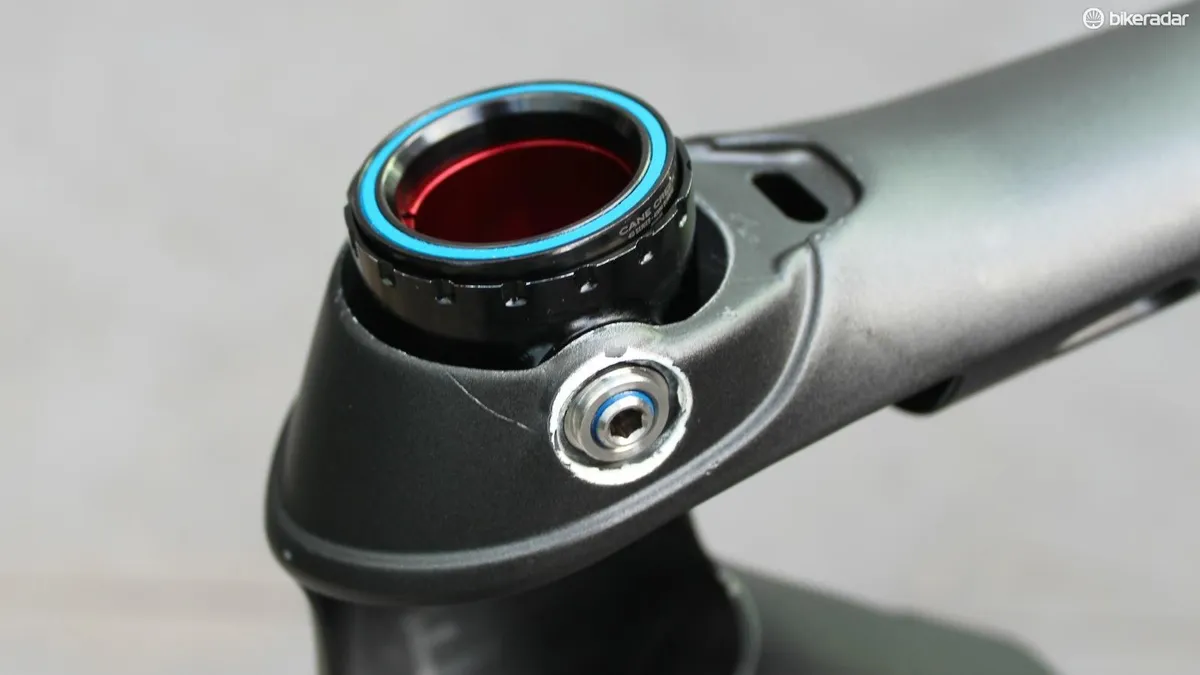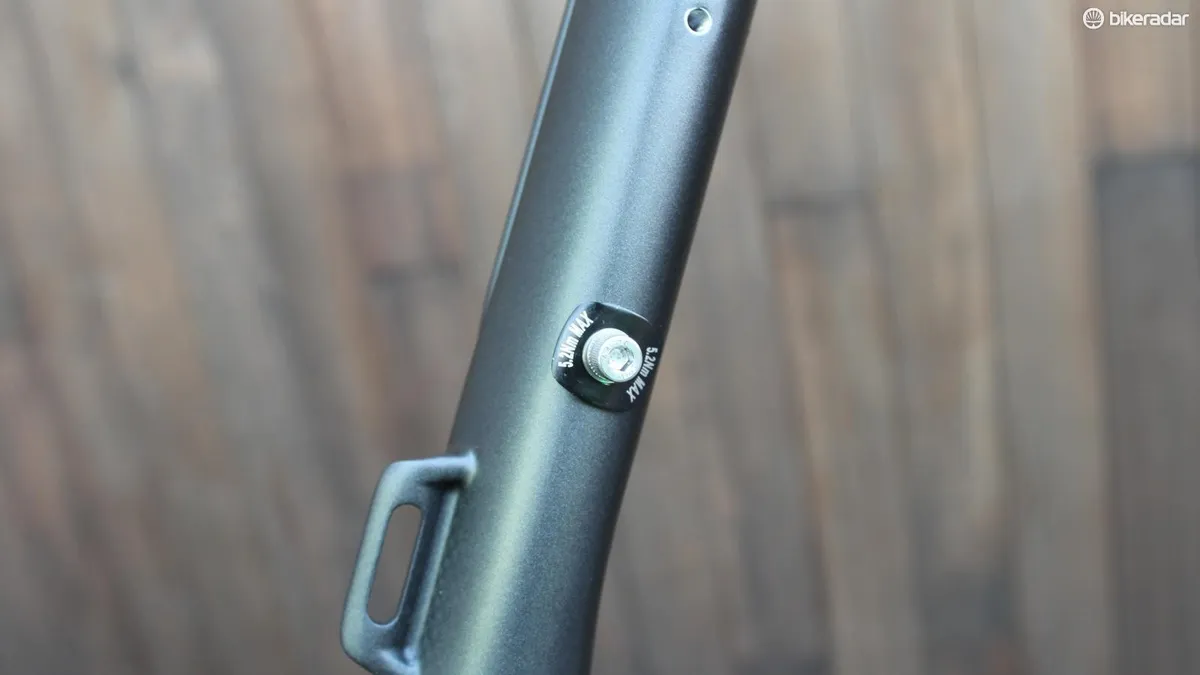The new Trek Domane SLR is the most important endurance road bike of 2016.
In completely rethinking how the tubes of a frame brace each other, Trek engineers have redefined how a road bike interacts with the road and the rider. By adding pivots front and rear, they've enabled the machine to flex for that much-sought-after vertical compliance in ways never achieved before.
Further, instead of pigeonholing the bike as a gravel bike or an endurance race bike as is the trend, the Domane’s geometry and clearance is such that it can really be both. Especially in the disc configuration, which can easily fit 32mm tyres, the Domane SLR is a well-mannered road bike that’s at equally at home on paved or dirt roads.
BikeRadar rides the trek domane slr on the belgian cobbles
What it's not
Ever since the endurance road bike was created, engineers had a few levers they could pull to add comfort.
Wider tyres — and the fork and frame clearance to handle them — are the most obvious and the most impactful variable when seeking to add comfort to a bike. Just ask the pros who race Paris-Roubaix every year.

Trek didn't change the bike's geometry – it changed how the tubes interact with each other
Then there is the carbon layup in the fork and frame. One of the great things about the wonder material is that engineers can, to some degree, ‘tune’ how tubes act through the fibre orientation, tube shape and construction. Look at the flat chainstays on a Cannondale Synapse or the pencil-thin seatstays on a Cervelo R or C Series. The former allows for some vertical flex while keeping pedalling stiffness, and the latter just allows for a bit of vertical flex to help take the edge of the bumps. The thing is, road bicycle frame are built in vertically oriented triangles, and this triangulation is at odds with the whole laterally stiff yet vertically compliant thing.
The biggest contributing factor to comfort in terms of the frameset comes at the seatpost, which can flex vertically precisely because there is no triangulated bracing. Note the skinny 25.4 seatpost on the Synapse, for example – I would argue that this piece contributes far more to comfort than the split down tube.
What it is
The original Domane thumbed its nose at traditional double-triangle design by adding a pivot where the seat tube is typically locked solidly into the top tube and seatstays. In doing so, the seatpost flex that used to stop at this junction now could extend all the way down to the bottom bracket. The resulting suspension was and is immediately apparent when riding.
For 2016, this pivot, which Trek calls an IsoSpeed Decoupler, was added to the front end, as well. The concept is the same as at the rear — let the carbon flex more vertically with fore and aft movement while restricting side-to-side movement.

The steerer tube is allowed to bow fore and aft inside the head tube
Normally, a bike’s front end will flex at the fork’s legs, and then a very small amount where the steerer tube protrudes above the top headset cap, plus a bit in the handlebar and stem.
By adding a pivot in the head tube, Trek engineers allowed a much longer section of the steerer tube to flex. Since it’s anchored on either side, there is no laterally play in the steerer, so it feels like a normal bike when you are steering, climbing or cornering.
Trek also added adjustability to the rear of the Domane SLR. By loosening a bolt that doubles as the lower water bottle cage bolt, you can then move a slider up and down on the seat tube. Moving it up stiffens the ride by effectively shortening the section of tube that is flexing. Moving it down softens the ride.
What it's like to ride
I spent two weeks in Belgium riding four bikes on the cobbles of the Tour of Flanders course and the Paris-Roubaix pavé in nearby northern France. The Domane SLR was noticeably the best of the lot. Sure, most of us don’t ride cobbles on a regular basis, but the stone surface does make for an excellent test ground.
A common complaint on the original Domane was that it felt imbalanced; the back end was nice and soft but the front was relatively harsh. This new frameset is much more balanced. Bumps still come up through the frame, to be sure, but the harsh edges are smoothed off, front and rear.
The worse the roads get, the better the bike shines. On normal roads, the Domane SLR feels like any other good endurance race bike. When you stand up and torque on the bars, it certainly doesn’t feel mushy or soft; quite the opposite. The massive down tube/bottom bracket area provides a solid pedalling platform.
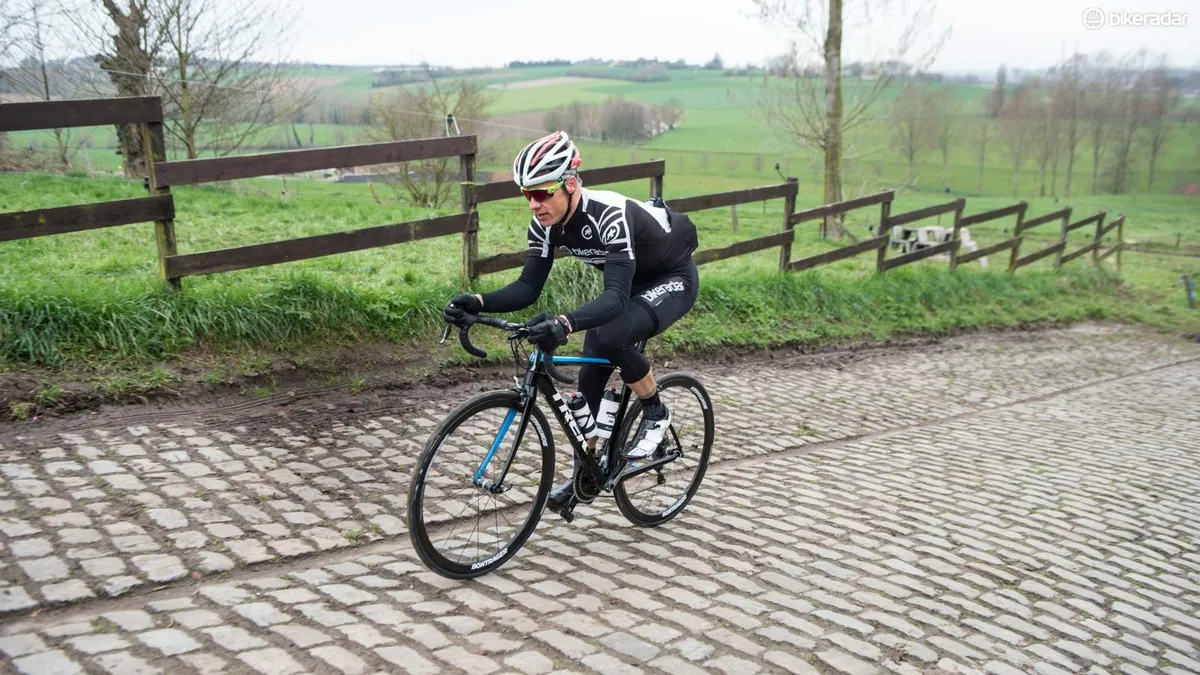
The Domane SLR performed smoothly on the cobbles of Belgium and northern France
There are two fit options: Trek’s Endurance Geometry and a new Pro Endurance Geometry. With the latter, you can get a very aggressive, low position just like you can on an Emonda race bike, but with a longer wheelbase, and a lower bottom bracket. For example, I run 10cm of saddle-to-handlebar drop and still had 3cm of spacers under stem on the 56cm test bike I rode.
The Domane SLR is not an out-and-out gravel bike. It’s not a super slack, ultra long, sleepy bike. It’s an endurance road bike that you can happily pilot wherever you like. For me, being a fairly traditional roadie that likes to ride dirt as well as smooth pavement, I think Trek has absolutely nailed it with this bike. I can get my standard race position on a bike that takes big fat tyres – usually it’s one or the other.
The IsoSpeed front and rear isn’t magic. But it isn’t a gimmick either. Instead of bolting things onto a road frame’s traditional triangles like Specialized’s Zertz or even the elastomer suspension of the Pinarello K8-S, the Domane SLR reworks the configuration entirely, allowing carbon do its thing, flexing like an airplane wing in one direction and remaining stiff in the other.
We have test bikes on the way for our US and UK crews, so look for a full review soon on BikeRadar.
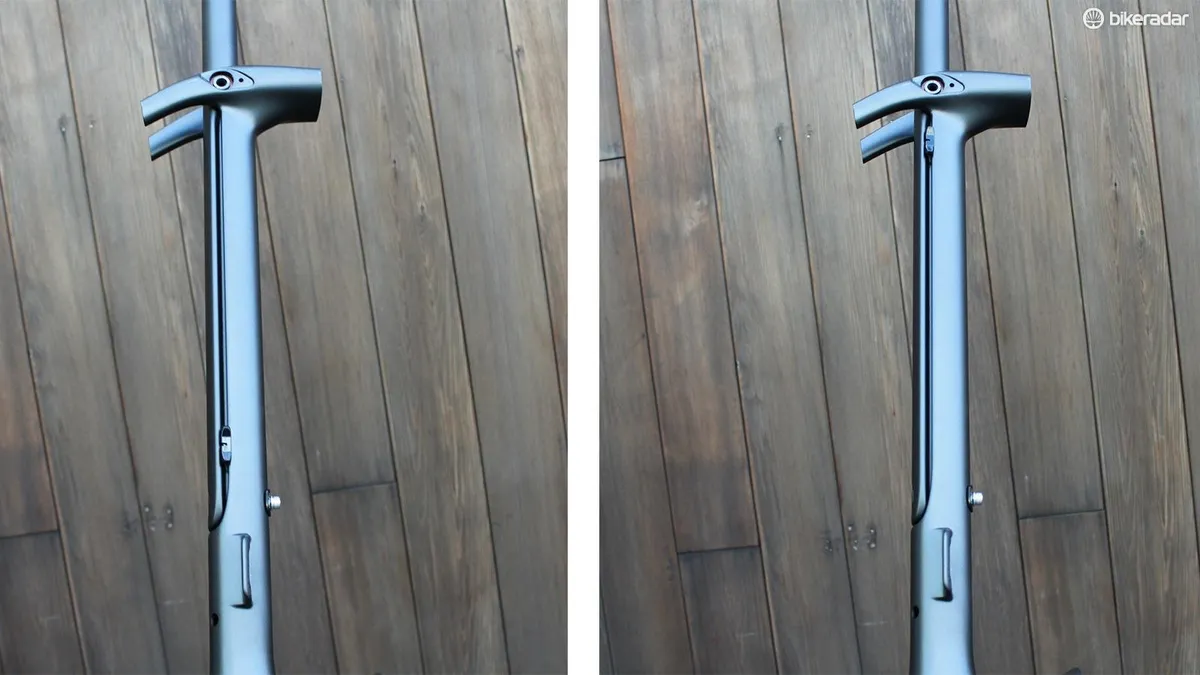
Moving the slider down (left) effectively lengthens the amount of flex; moving it up stiffens the ride
